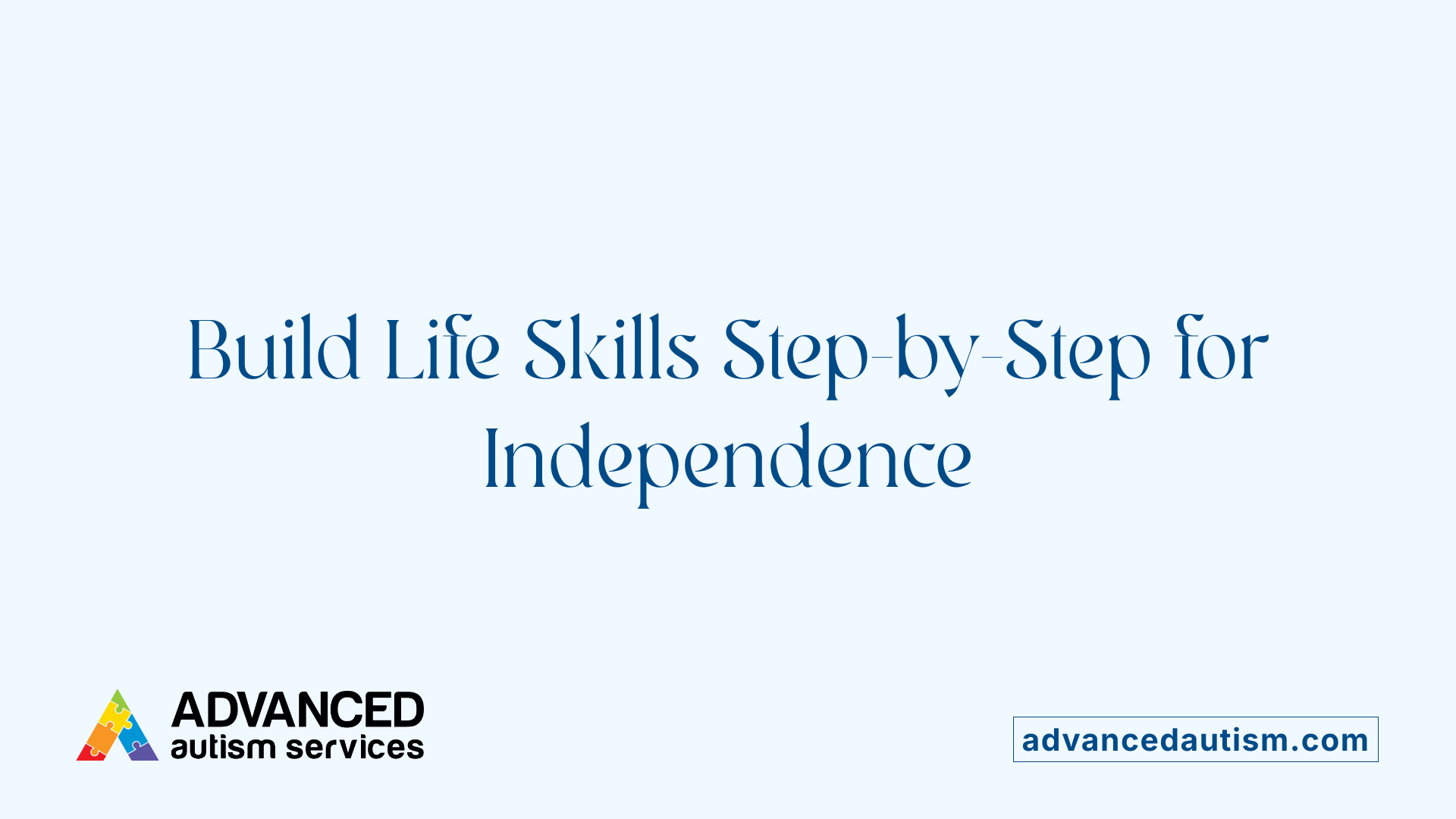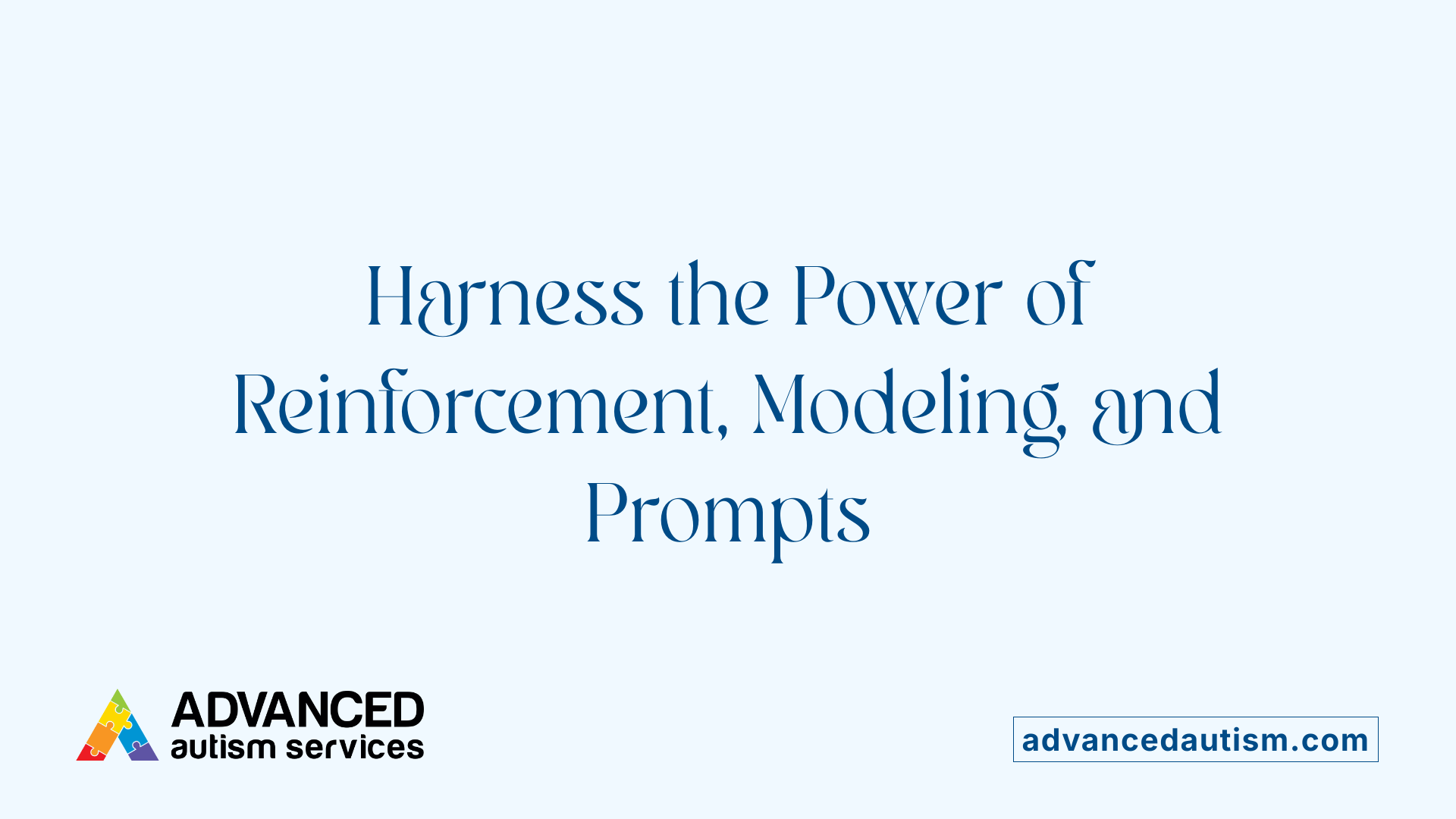How to Build Independence Skills in Children with Autism
Empowering Young Minds: Strategies for Fostering Independence in Children on the Autism Spectrum
Introduction to Building Independence in Autism Therapy
Developing independence skills in children with autism is a vital goal of therapy and everyday life. With the support of evidence-based behavioral analysis techniques, especially Applied Behavior Analysis (ABA), children can gain essential life skills, enhance social interactions, and improve communication, all while fostering self-reliance. This article explores effective strategies and professional approaches to empower children with autism to navigate their world more independently, highlighting both therapy methods and practical tools for families and caregivers.
Understanding Behavioral Analysis Therapy for Autism
What is behavioral analysis therapy for autism?
Behavioral analysis therapy for autism, commonly known as Applied Behavior Analysis (ABA), is a scientifically grounded approach that aims to improve social skills, communication, and daily living activities in individuals with autism. It is based on principles of learning and behavior, focusing on what triggers certain behaviors and how to reinforce positive actions effectively.
How are ABA programs individualized and delivered?
ABA programs are tailored to the unique needs of each child. Specialists called Board Certified Behavior Analysts (BCBAs) conduct detailed assessments to identify the child's abilities, developmental stage, and environmental factors affecting behavior. Therapy is delivered across several settings including the home, schools, and community spaces, often by certified professionals or trained companies.
What techniques are used in ABA therapy?
The therapy employs various techniques centered around positive reinforcement, which rewards desired behaviors with praise or preferred items. Common strategies include Discrete Trial Training—a structured way to teach skills—and naturalistic methods that use play and everyday routines. Visual schedules, prompts, modeling, and assistive technology are also used to encourage learning and independence.
What does research say about ABA’s effectiveness?
Extensive research underscores ABA's success in promoting meaningful behavioral improvements in children with autism. Studies have shown that early and intensive ABA therapy can enhance communication, reduce harmful behaviors, and increase socially significant skills. Organizations like CABER use evidence-based ABA practices integrated with research to continually refine and support interventions.
How does ABA therapy support developmental growth?
ABA focuses on building independence and functional skills through structured routines and targeted life skill training such as cooking or managing money. Therapy emphasizes setting realistic goals and adapting interventions to each child's sensory and communication needs, ultimately fostering confidence and reducing anxiety in natural environments.
Who Provides Behavioral Analysis Therapy? The Role of Specialized Professionals
Qualifications and Roles of BCBAs and Therapists
Behavioral analysis therapy, commonly referred to as Applied Behavior Analysis (ABA), is provided by trained professionals such as Board-Certified Behavior Analysts (BCBAs), licensed psychologists, and specialized therapists. These professionals undergo rigorous education, fieldwork, and a certification process to ensure a high standard of care. BCBAs in particular focus on designing and supervising individualized ABA programs that address the unique needs and goals of each child with autism.
Settings of Therapy Delivery
ABA therapy is versatile and can be delivered in a variety of settings including the child’s home, specialized clinics, and schools. Many services involve teams of trained staff who work under the guidance of a BCBA to implement therapy sessions and monitor progress.
Collaboration with Families and Teams
A crucial component of effective ABA therapy is the collaboration between professionals and families. Parents and caregivers are encouraged to participate actively by learning and applying behavioral strategies at home. This involvement helps reinforce skills learned during therapy and supports generalization across everyday environments.
Training and Certification Process for Providers
To become a BCBA, individuals must complete formal education in behavior analysis, engage in supervised fieldwork, and pass a certification exam. This process ensures that providers are well-equipped to deliver evidence-based, individualized intervention for children with autism spectrum disorder.
Through comprehensive training and collaboration with families, behavioral analysts play a vital role in supporting children’s development and independence using ABA techniques.
How Behavioral Analysis Therapy Benefits Children with Autism

Skill development and behavior management
Behavioral analysis therapy, commonly known as ABA, helps children with autism develop essential skills and manage behavior through structured and individualized interventions. This approach targets socially significant behaviors, encouraging positive habits while reducing harmful ones. Building independence is central, with techniques like teaching life skills—such as cooking, cleaning, and managing money—and creating routines that bring predictability and reduce anxiety.
Positive reinforcement and personalized strategies
A cornerstone of ABA is positive reinforcement, where desirable behaviors are rewarded with praise or preferred items to motivate continued progress. Interventions are personalized by trained professionals including Board Certified Behavior Analysts (BCBAs) who assess each child's abilities, interests, and communication needs. Parents are vital partners, applying learned strategies at home using methods such as modeling, prompting, visual schedules, and natural play with common toys aligned with the child’s preferences.
Improving communication, social, and adaptive abilities
ABA promotes better communication and social skills by using structured opportunities and explicit instruction supported by visual aids and assistive technology like communication devices and social stories. Children learn to understand and remember steps in self-care with checklists and schedules, supporting adaptive behaviors for daily life. Social skills growth is enhanced through guided interactions and positive reinforcement, facilitating engagement and reducing anxiety.
Data-driven progress monitoring
Progress in ABA therapy is regularly tracked using data collection tailored to each child's goals. This scientific and evidence-based approach ensures continual adjustment based on results and observed behaviors. Organizations like CABER exemplify this by integrating research and services, using observation tools and technology innovations, thereby enhancing therapy effectiveness and outcomes.
Together, these strategies enable ABA therapy to support children with autism in gaining independence, improving communication, and thriving in multiple environments.
Encouraging Decision-Making and Problem-Solving Skills
Why Fostering Autonomy Matters
Encouraging decision-making in children with autism helps foster autonomy and builds their confidence. When children have opportunities to make choices, even simple ones, they learn to trust their instincts and develop a sense of control over their environment. This autonomy is a foundation for lifelong independence.
Strategies to Encourage Safe Choices
Supporting autonomy starts with offering limited options that are safe and manageable. For example, caregivers can offer two preferred snacks or two activities, guiding the child to select one. Visual aids like choice boards or pictures can help children understand options clearly. Positive reinforcement, such as praise or a small reward, can encourage the child to engage in making decisions.
Supporting Problem-Solving Without Hovering
Instead of stepping in immediately when a child struggles, practicing patience allows children to attempt solving problems on their own. Caregivers can observe calmly and provide verbal prompts or modeling when necessary. This balanced support helps children build problem-solving skills without feeling overwhelmed or dependent.
Impact on Confidence and Independence
As children become more skilled in decision-making and problem-solving, their self-confidence grows. This success encourages them to take on new challenges and strengthens their ability to navigate daily life independently. Consistent encouragement and gentle support create a positive cycle of growth and empowerment.
Creating Structured Routines with Visual Supports

Role of routines in reducing anxiety
Structured routines play a vital role in creating a predictable environment for children with autism, which can significantly reduce anxiety. Predictability helps children feel more secure, as they understand what to expect next, minimizing stress that can arise from sudden changes or uncertainty.
Using visual schedules and checklists
Visual schedules and checklists are effective tools to support these routines. They break down daily tasks into clear, manageable steps, making it easier for children to follow and remember the sequence of activities. These tools can include pictures, words, or symbols tailored to the child's comprehension level.
Making schedules tangible and easy to understand
To make schedules tangible, it's important to use visual supports that children can interact with, such as magnetic boards, laminated cards, or digital apps. These visual aids provide concrete reminders of what comes next and allow children to mark completed tasks, fostering a sense of accomplishment.
How structure promotes self-management
Creating structured routines with visual supports encourages self-management by empowering children to independently navigate their day. By clearly defining expectations and steps, children can develop greater autonomy in completing self-care and life skills, contributing to their overall independence and confidence.
Teaching Life Skills Systematically and Gradually

Age-Appropriate Task Involvement
Introducing life skills to children with autism begins with involving them in tasks suited to their current developmental level. Early involvement might include simple actions like sorting utensils or helping set the table. These tasks provide hands-on experiences that build foundational skills while maintaining the child's interest and confidence.
Step-by-Step Progression of Responsibility
Teaching life skills should follow a clear, gradual progression. Starting with basic steps, children can learn to complete tasks independently as their skills grow. For example, cooking tasks might begin with washing vegetables and evolve to measuring ingredients and eventually preparing simple meals under supervision.
Examples of Cooking, Cleaning, Managing Money
In cooking, children may start with stirring ingredients or assembling sandwiches. Cleaning tasks might include putting away toys or wiping surfaces, moving to laundry sorting and organizing personal spaces. Managing money skills can start with recognizing coins and bills and progress to budgeting small amounts and making purchases with guidance.
Real-Life Practice Opportunities
Practical application is essential for skill retention. Providing children chances to practice skills during daily routines, such as helping prepare family meals, participating in shopping trips, or organizing their belongings, reinforces learning. These real-world experiences promote independence by situating skills in meaningful contexts.
This structured, stepwise approach, supported by visual aids and positive reinforcement, ensures that children with autism can develop essential life skills confidently and effectively over time.
Using Positive Reinforcement, Modeling, and Prompting

What are the key techniques for skill acquisition?
Positive reinforcement, modeling, and prompting are fundamental techniques used in behavioral therapy to help children with autism acquire new skills. These methods create a supportive learning environment tailored to the child's individual needs and preferences.
How does praise and the use of preferred items aid learning?
Positive reinforcement involves rewarding desirable behaviors immediately after they occur. This can be through verbal praise or giving access to preferred items such as toys or activities. Rewarding positive behaviors encourages the child to repeat those actions, promoting consistent progress.
How is modeling used to facilitate imitation?
Modeling entails demonstrating a behavior for the child to observe and imitate. For example, a therapist or parent might perform a task like sorting blocks or using a spoon, giving the child a clear example to follow. This technique taps into the natural learning process of observing others.
What are prompting strategies to support learning?
Prompting involves providing cues or assistance to help the child complete a task. This can include verbal prompts, gestures, or physical guidance. Prompts are gradually faded as the child gains independence, encouraging self-reliance.
Together, these strategies form an effective framework for teaching life and social skills, allowing children to learn in engaging and manageable ways while building confidence and independence.
Incorporating Play and Everyday Toys in Therapy
Engaging Children Through Interests
Therapeutic activities that harness a child's personal interests can make learning more enjoyable and effective. By focusing on what naturally captures their attention, therapists and parents can motivate children to participate actively in skill-building exercises.
Using Common Toys Like Puzzles and Blocks
ABA therapy does not require specialized or expensive toys. Everyday items such as puzzles, blocks, dolls, and toy cars are powerful tools in therapy. These toys are versatile and can be used to engage children in various learning tasks.
Naturalistic Learning Through Play
Playing with familiar toys creates a natural environment where behavioral therapy can be seamlessly integrated. This approach helps children apply new skills in settings similar to their everyday experiences, fostering better generalization of learned behaviors.
Building Skills Such as Naming Colors and Sorting
Using toys in play provides opportunities to develop foundational skills. For example, while sorting blocks, children can practice color recognition and categorization. Naming colors or identifying toy types during play supports language development and cognitive skills.
Supporting Social Interaction and Communication
Structured Social Opportunities
Creating structured social settings plays a vital role in helping children with autism improve their social interaction skills. These environments provide predictable scenarios where children can practice communication and social behaviors in a safe and supportive context.
Explicit Instruction and Visual Supports
Direct teaching methods, combined with visual aids such as schedules and social stories, help clarify social expectations and routines. These tools make abstract social concepts more concrete and easier for children to understand and remember.
Use of Assistive Technology and Communication Devices
Assistive technologies, including communication devices and visual supports, are instrumental in enhancing a child’s ability to express themselves and comprehend social cues. These tools bridge gaps in communication, enabling more effective interaction with peers and adults.
Enhancing Social Skills Through Reinforcement
Positive reinforcement techniques encourage the development and repetition of appropriate social behaviors. Praising or rewarding children when they engage well socially not only boosts confidence but also motivates them to continue practicing these skills.
Together, these strategies form a comprehensive approach to supporting social communication in children with autism, helping them build meaningful connections and navigate their social worlds with greater ease.
The Role of Parents in Promoting Independence

How Can Parents Be Involved in Therapy?
Parents play a crucial role in supporting their child's progress in behavioral therapy for autism. Therapy thrives when parents actively participate and reinforce skills at home. This involvement ensures consistent use of strategies and helps generalize learning beyond clinical settings.
What Behavioral Strategies Can Parents Implement at Home?
Parents can apply several effective techniques learned through therapy. Positive reinforcement, such as offering praise or preferred items when children demonstrate desirable behaviors, encourages ongoing skill development. Conversation and cognition exercises promote meaningful communication, while modeling behaviors and providing verbal prompts help guide children through learning steps.
Why Are Consistency and Generalization Important?
Using behavioral techniques consistently across different environments bolsters skill retention. When parents apply strategies at home, children can practice skills in natural settings, enhancing their ability to use those skills independently and adaptively.
Which Techniques Are Recommended for Parents?
Visual schedules and checklists serve as practical tools to help children understand and follow daily routines or self-care tasks. Modeling desired behaviors provides clear examples, while verbal prompts assist in initiating or completing tasks. These methods work together to encourage independence in a supportive way.
By engaging in therapy, adopting evidence-based strategies, and being consistent, parents empower their children with autism to develop essential life skills and greater independence.
Celebrating Achievements and Practicing Patience

Motivating Children Through Recognition
Celebrating achievements plays a vital role in motivating children with autism. Recognizing their progress, no matter how small, builds their confidence and encourages continued effort. Positive reinforcement, such as praise or preferred items, serves as meaningful rewards that support behavior change and skill development.
Respecting Individual Developmental Pace
Every child develops at their own unique pace, especially those with autism who may face sensory or communication challenges. Patience from caregivers and professionals ensures that children feel supported rather than pressured. Setting realistic, manageable goals tailored to each child's abilities helps foster a respectful and nurturing learning environment.
Maintaining Positive Attitudes During Challenges
Behavioral growth often includes facing setbacks and difficult moments. Maintaining a positive attitude during these challenges is essential for both children and their support teams. Encouragement, understanding, and consistency contribute to building resilience and sustaining motivation through setbacks.
Long-Term Commitment to Growth
Supporting children with autism requires a dedicated long-term commitment. Achievements should be celebrated consistently, and patience should be practiced continuously to accommodate ongoing learning and independence. This approach helps children gradually build life skills, social abilities, and confidence needed for their future.
Conclusion: The Path to Greater Independence
Building independence skills in children with autism is a multidimensional journey that combines specialized behavioral therapies with practical, everyday strategies. Applied Behavior Analysis (ABA) stands as a cornerstone in this effort, offering tailored interventions that improve communication, social abilities, and essential life tasks. Collaboration between trained professionals, families, and educational systems enhances the consistency and effectiveness of these approaches. By encouraging decision-making, establishing structured routines, and celebrating progress, children with autism can gradually acquire the confidence and skills to navigate the world with greater autonomy. Patience and perseverance remain essential as every child's development unfolds uniquely, but the transformative potential of these carefully applied methods paves the way for meaningful independence and improved quality of life.
References
- 5 Practical Ways to Build Independence in Children
- Behavioral Therapy Activities For Autism
- A lifetime of support: How CABER uses science and service to ...
- Empowering Autistic Children: Tips for Building Their ...
- Applied Behavior Analysis (ABA)
- The Top 10 Reasons Children With Autism Deserve ABA
- Applied Behavior Analysis (ABA)
- 6 Benefits of ABA Therapy for Children with Autism
- Applied Behavior Analysis (ABA)
- Applied Behavior Analysis (ABA)







